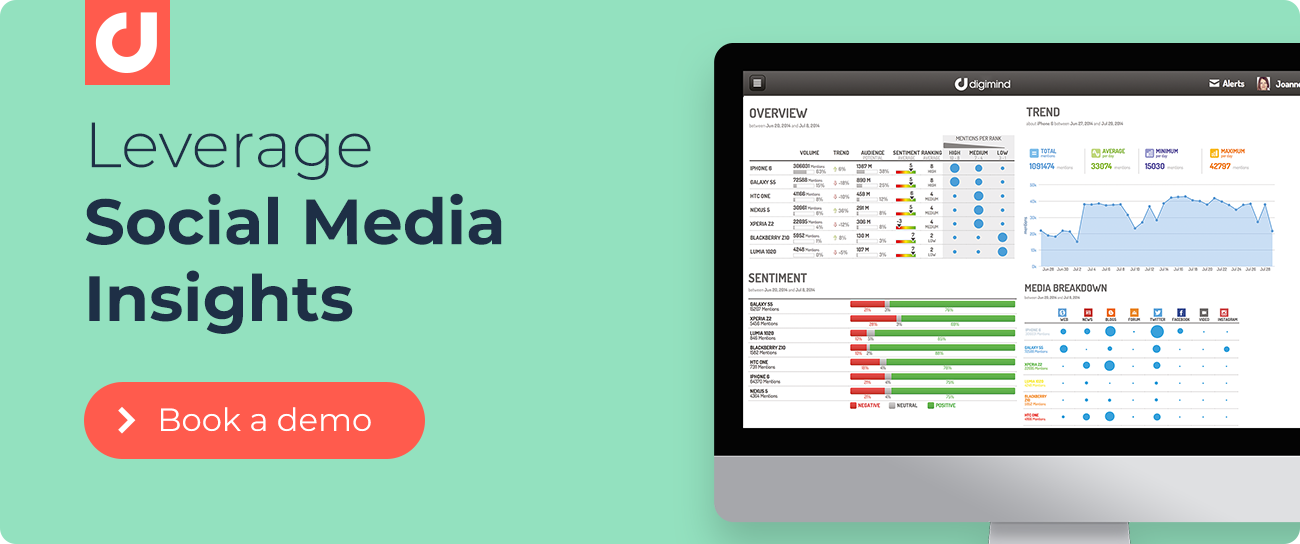5 Vital Social Listening Strategies To Help Your Brand Stand Out
Social Listening Is What Your Marketing Strategy Needs
Currently there are many ways to connect with consumers and find out what makes them tick. Social listening is a strategy that many marketers now use in order to unearth valuable insights about what people like, what they dislike, what they’re buzzing about on social media, which brands attract them the most, and what kind of content they’re more receptive to in turn.
How this is achieved is through data analysis, information that’s collected, organized, and then broken down into digestible truths that can be the difference between a campaign’s success, or its downfall. Marketing and consumer insights professionals need social listening in order to lay the foundation for well-advised strategies, and without that edge, a brand or business might not know who they’re talking to, how they should talk to them, when it’d be best to engage their target audience, and what they’d even get across as their key messaging.
Using Social Listening? Use The Best Strategies!
Imagine trying to put together an Ikea dining room table. Now imagine doing so without the instruction manual! Sure you could try winging it because you know what a table generally looks like, but if you don’t have the exact details before tackling the monumental effort of putting together modern furniture with composite pieces, you’re going to end up with, at best, a very wobbly dining room fixture, and at worst, a hope and a prayer that Ikea takes product returns without the receipt.
The same basic principle goes for devising a marketing strategy for your brand: Thanksgiving’s right around the corner and luckily for you, you have the honor, nay, the privilege, of working for Tom’s Turkey meat wholesaler. As their Chief Marketing Officer, you’re tasked with getting the word out to the folks that your company’s turkey legs are the best on the market. With the holiday soon approaching, it’s going to be an easy job, right? Overconfidence leads many in your shoes to make the terrible mistake of not fully understanding the necessity of social listening. If you can’t hear what people are saying this year, then you don’t realize that the new trend is going green with tofurkey, and instead of preparing a line of delicious tofu-based turkey products for the season, you’re criticized for being cruel to turkeys and Tom’s Turkey meat wholesaler has a huge crises on their hands. No presidential pardon will be big enough to bail you out of that mess.
But anecdotes are for the birds, and you get the point. However, it’s not enough to be a social listening believer, you also need to know which strategies will work the best for you and your needs when obtaining key information from data-driven insights. Well Christmas is coming even earlier for you this festive season, as we’ve come up with a short list of valuable strategies that’ll be vital for your social intelligence activities. Starting with...
1. Brand Reputation Analysis
An excellent place to begin is with the Brand Reputation Analysis strategy, a comprehensive means by which you can track the general perception of your brand’s positivity or negativity, effectiveness and overall reach in getting a message across to boost business and engagement. With Brand Reputation Analysis, you can designate a window of time that represents the frame of research your data will show your brand was most on the minds of customers, for better or worse.
Take for example this use of the strategy on Nike between the months of November and December back in 2018:
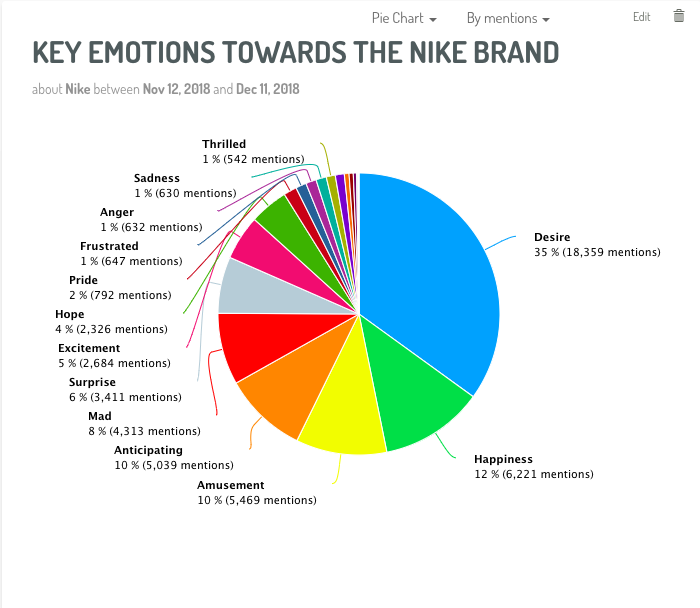
The key emotions displayed on this pie chart point towards a mostly positive perception of the prominent shoe and athletics company, with emotions such as “Happiness”, “Desire”, “Amusement”, and “Anticipation”, grabbing the largest share of the percentage, whereas negative emotions like “Sadness”, “Anger”, and “Frustration”, were representative of the bottom half of the brand’s perception.
Another great use of the Brand Reputation strategy involves going further in-depth with those same emotions surrounding a brand’s reputation, and scrutinizing the number of mentions made on social media related to certain consumer mindsets. In the example below we can see how this plays out in a different social listening effort:
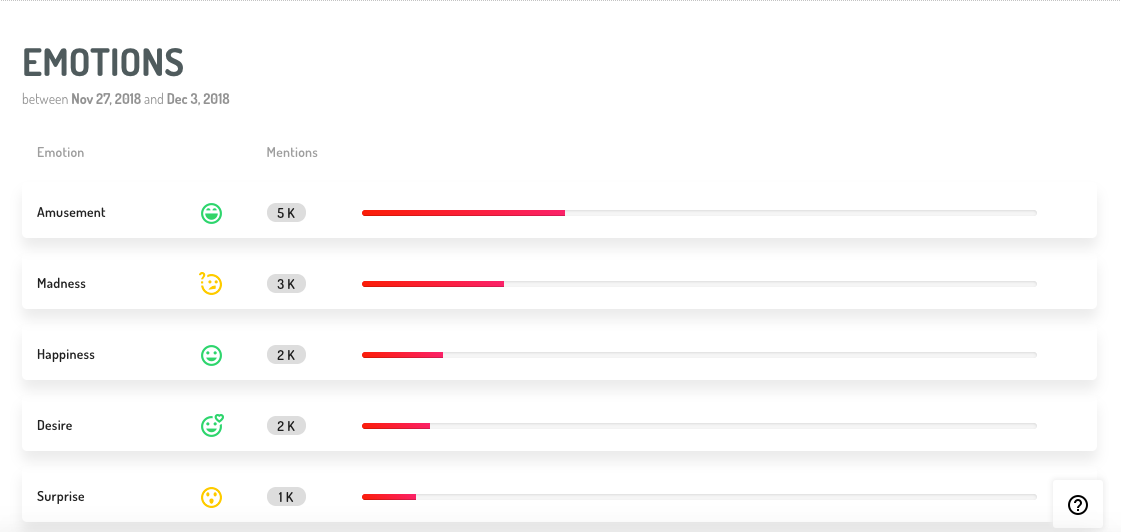
We can see how the emotion “Amusement” leads with the most mentions at 5K, clearly signifying how their reputation could be working best with a more playful and lighter marketing approach. Though the next largest emotion by mention size is “Madness”, with 3K, meaning that not everything that the brand is doing is particularly beneficial overall. Marketing and insights professionals would do well to use this strategy frequently in order to closely monitor the health of their brands.
2. Consumer Sentiment Analysis
So we’ve covered a strategy that highlighted how well the brand’s reputation fares in real time, how about a strategy that dives deeper into a different consumer insights hole, something that tells us how they FEEL about certain terms, trends, concepts, campaigns, brands, etc. Say hello to the Consumer Sentiment Analysis strategy, a marketers best friend! With this asset at our disposal, we can understand the general positive or negative (or even neutral) feelings that people have regarding a chosen subject.
This strategy is absolutely one of the most important assistants for marketing and insights professionals due to the kind of information revealed by these sentiments. Understanding a target audience’s preference can ultimately make or break a campaign. If you don’t know whether or not your ideal market is open to a certain thing, then how would you know whether to promote it or avoid it? If you were a major sports workout retailer making life-or-death decisions on what products to have in stock during the Christmas season, and you saw the below Consumer Sentiment Analysis report below, what products would you prioritize?
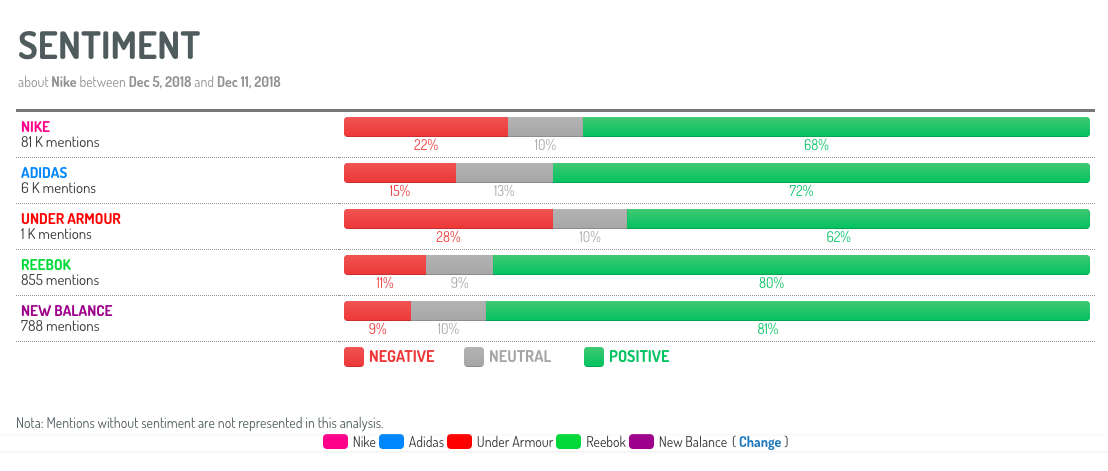
Clearly mom and dad are more likely to call you their favorite child if you sprung for the Reebok versus the Under Armour presents. Though just a one-off sample, this report can illuminate so much about where people are emotionally with certain brands, and this is the first step for marketers to either find out WHY there’s such negative sentiment around Brand X, and why there’s so much goodwill towards Brand Y.
3. Audience Segmentation
Understanding your audience is key for better positioning your marketing strategy in ways that’ll most likely connect with consumers. Audience Segmentation is a strategy that better breaks down the data of WHO you’re appealing to for your brand’s messaging, in ways that might seem banal at first glance, but are highly important for many reasons. The Audience Segmentation strategy can isolate the WHERE of netizens on social media, the WHO on social media, and so much more. Take the graphic below, for example, which offers a geographic segmentation of political savvy twitterers, and where they mostly buzzed in the United States during the 2020 US Presidential Election:
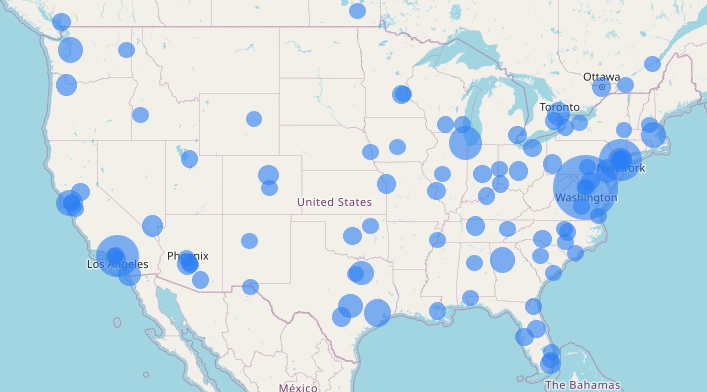
Check out Digimind's latest report on how social listening hinted at Joe Biden's election win!
And in the next use of this strategy, we can see how the gender and age of a certain target audience group are broken up to provide marketing and insights professionals a better understanding of what their consumer base is made of. A takeaway from this information could be to focus more on women within the messaging of your next digital campaign strategy, or to reevaluate whether what you’re doing is working for older customers.
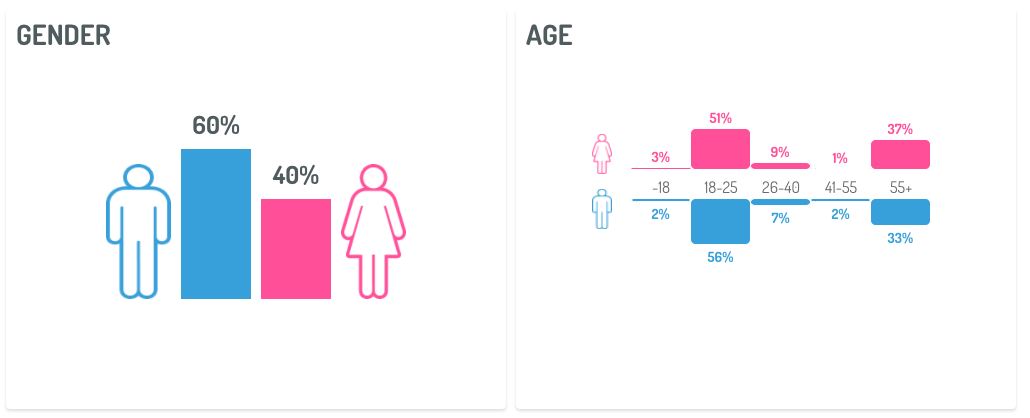
By illustrating the details of those you’re trying to connect with, using the Audience Segmentation strategy, you’re able to more fully develop and flesh out the kind of content you’ll develop for future campaigns. Though yes, it’s true that we’re all human beings with similar wants and desires, men and women do fundamentally have varying levels of interests for particular products and services. Age groups are especially representative of this point as well, with younger target audiences having much different preferences for social media, entertainment, and consumer goods. Occupation can also be a determinant when factoring in which professions you're marketing to.
4. Campaign Tracking
Everyone wants to be a winner, and with the Campaign Tracking strategy you can see what the score is when it comes to your brand’s marketing campaign(s). Ultimately, many things can hinge on powers outside of our control, that’s unavoidable in life, but by being able to see how well your marketing campaign is engaging with your intended audience, you’ll be better positioned to act upon those gains or losses. This strategy provides marketers a graph that’s instrumental in gauging:
- Mentions
- Estimated Reach
- Social Interactions
- And more!
Going back to sports again, when Nike wants to find out how well their advertising money is being spent, they can bust out the Campaign Tracking strategy to figure out what’s working and what isn’t.
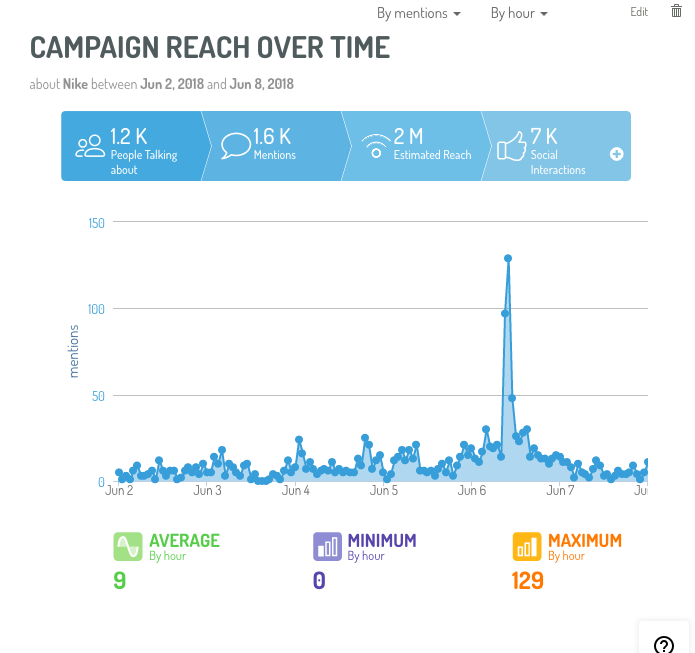
Like the Brand Reputation strategy, with this assistant you can assign a time frame for the social listening research to work within, and then isolate the period where the most consumer engagement is taking place. What happened in the above graph between June 6th and July 7th? If the answer was that a popular social media influencer did a whole set of videos on how awesome the latest Nike shoes were, and that boosted sales of the aforementioned shoe product line, then Nike would want to know the who, what, why, and how of this influencer, maybe partner up with him or her for future content or endorsements. And speaking of influencers...
5. Key Influencer Identification
Love’em or leave’em, influencers are here to stay, and they're a prime element of the social media and content ecosystem. Marketing and insights professionals alike know how vital they can be to a brand’s image and creative output. Social Listening is a great way to figure out who's most appropriate to work with for the promotion of your brand's product or service. A bad influencer partnership is worse than having no association, because negative publicity is infinitely more detrimental to a brand’s reputation, then just not standing out at all. So if you want to understand how to avoid a bad or nonexistent state of affairs regarding influencers, you and your team should definitely take advantage of the Key Influencer strategy.
By having a complete and accurate list of online personalities at your fingertips, you can assess all sorts of necessary facts, such as how many followers certain influencers have, where they’re based, what their ranking is when compared to others within a particular niche or field, and how many people they’re following as well. Let’s look at the strategy in action below:
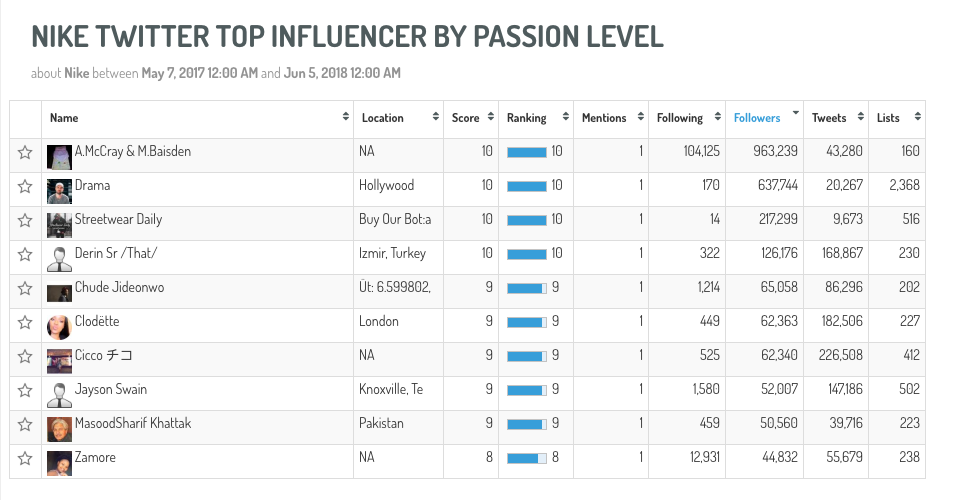
In the example provided, we can see how the influencers are ranked based on a number of factors, and having a breakdown this granular allows marketing teams to make the best possible decision going forward. The influencers in this sample all speak about or develop their own content focused on Nike and Nike products. Though one’s first instinct would be just to jump at connecting with the Twitter account listed in first place, a true social listening pro would do the necessary research, vet each candidate within a certain parameter of top 5 or top 10 influencers, and see the KINDS of content/tweets they’ve made. Doing so will guarantee the best possible outcome, and a better, more informed influencer partnership strategy.
Strategize Like a Pro. Market Like a Pro.
Putting aside all the poorly assembled Ikea tables and turkey dinners made out of tofu, social listening can apply to anything and everything worth researching for businesses and brands. Cleaning the glass case that holds a framed picture makes that picture much easier to see and understand, thus the same goes for your consumer base. Social listening helps make the overall picture clearer, so marketing and insights professionals have a better understanding of their target audiences, their current market, and all the different trends, sentiments, and consumer preferences to cater to or work around.
Knowledge is a gift, and you’ve been gifted with 5 incredible strategies to work with when you work on your next social listening assignment. True, it’s not a Playstation 5 or XBOX X Series console, but by knowing which hot holiday item is buzzing more on social media, and getting more love/hate online, you’ll be able to give your client (assumably Sony or Microsoft) the gift that keeps on giving.
Written by Micah Levin
With a background in creative writing, advertising, and psychology, Micah is a copywriter in name and a Digiminder at heart. When he's not developing content for agencies, you can find him crafting novels, cooking and running around in Brooklyn, NY.

